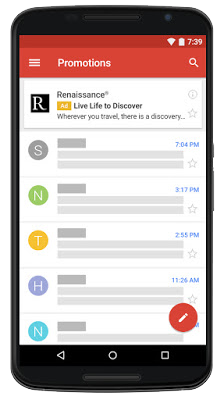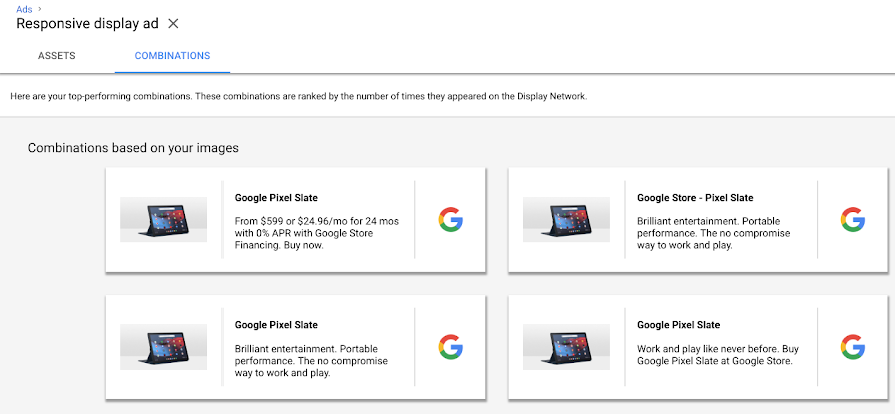
Why Your Website Needs Google Analytics Goals
July 13, 2020
Is Your Website Content Out-of-Date?
August 4, 2020Your Reference Guide for Google Ads

With over 90% of the search engine market share Google is king. As the industry leader in digital advertising, Google offers a variety of different and ever-changing advertising options. Understanding which type of Google Ads Campaign is right for you depends on your audience, messaging, and campaign goals. Here are the four campaign options for Google Ads - and their best applications:
1. Display Network Campaign
The Google Display Network Campaign utilizes over 2 million sites, including YouTube videos, Gmail, and mobile apps.
The Display Network allows for fine-tuned targeting when it comes to audiences. You can target a specific type of person (people interested in specific products like furniture, people of a particular age group who might have children, etc.) or certain contexts or content (like children’s furniture or kid’s room design ideas).

Responsive Display Ads
These are ads built from images, logos and ad text, often called “assets”. After uploading these elements, Google will generate Responsive Display Ads based on different combinations of your assets. The ads are then placed according to prior performance and optimal space. Because your assets are being utilized in multiple ways, Responsive Display Ads provide the widest reach of all Display Ads.
Uploaded Display Ads
Similar to Responsive Display Ads in that Google generates ad placement to optimize performance and reach, Uploaded Display Ads are created outside of Google and uploaded.
This allows for your business to maintain more control over ads than with Responsive Display Ads, as it sets the assets in one specific combination.
Gmail Ads
Gmail Ads appear at the top of the Promotions and Social tab within the Gmail inbox. Highly interactive, these ads first appear in a collapsed form which mirrors an email, but can be expanded into an email sized ad with content like embedded video, text, images, and submittable forms. A major benefit of this ad type is advanced targeting options, like demographics, affinity targeting and customer matching.

Engagement Ads
Engagement Ads allow your business to set ad objectives within certain sites on specific lead actions, beyond a simple click to your website. Ads are written and developed to encourage engagement with a specific element on your site, like a point-of-purchase page, a registration page, or a form. Bids are made on a cost-per-engagement instead of cost-per-click or cost-per-impressions basis. Consider this ad type if you want your leads to reach a specific page on your site, and cut out the “middleman” of navigating to the page.

2. Search Network Campaign
The Google Search Network Campaigns utilize several search related websites and apps to deliver ads. These are typically what most people think of when they hear “Google Ads”.
Ads on the Search Network can appear above or below search results as well as next to, above, or below Google Maps, Google Images, Google Shopping, and Google Play. While other types of ads, such as Video and Shopping Ads can appear in a Search Network Campaign, the primary type of ad utilized by this type of campaign is the Text Ad.
Text Ads
Composed of attention-grabbing headlines, a display URL (your website address), and a description, these ads allow your key information to be presented in a “can’t miss” format.

3. Video Campaign
Video Campaign Ads allow you to show video across the web and YouTube, as skippable in-stream ads, non-skippable in-stream ads, video discovery ads, outstream ads, and bumper ads.
The type of Video Campaign Ad determines the platform where it appears and the duration, and is based on your ad objective.
Consider Video Campaign Ads if you’re hoping to place an ad on YouTube or across the Google Display Network which is impactful and easy to manage.


4. Shopping Campaign
Shopping Campaigns allow your business to promote inventory directly to consumers. You can upload product data to Google’s Merchant Center, which Google uses to create ads that are more visual than a text ad.
Shopping Campaigns can appear both on the Google Search and Google Display Networks.
Google offers 3 types of Shopping Ads:
Showcase Shopping Ads
Similar to Product Shopping Ads, Showcase Shopping Ads help to introduce products, but on a larger scale. They can group your similar products together, introducing users to your brand rather than one item. This is beneficial to differentiate your business from competitors when general search terms are used.
Local Inventory Ads
Local Inventory Ads help nearby customers find your products, and acquire additional information like store hours, directions, and in-store inventory. When clicked, these ads lead to a “local storefront”, which is a Google-hosted page for your store or business that highlights your products.

5. App Campaign
App Campaigns allow your business to showcase your app across Google Search, Google Play, YouTube, Discover on Google Search, and the Google Display Network.
Google creates App Ads from ad text ideas and the assets you upload.

Make Google Ads work for your business. Start Now!
All images from Google Ads








